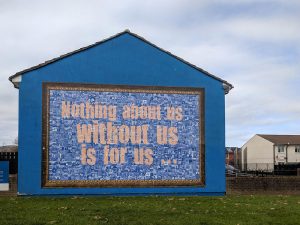As long as I have been working in this sector, there have been fads organized around words or phrases. My experience with them is that they are circulated until the mere sound of them makes good people think bad things about the topic in general.
Right now, I think that the word “accountability” is in danger of moving into this category. Overly repeated, it means very different things to different people. You will see this illustrated in the following section where each of the four articles takes a slightly different tack. But these articles also represent some of the very legitimate wrestling going on with this as an important issue for our sector.
In this issue, we first present an aspect of accountability that is too little discussed, but perhaps most important. When I read the article, “Do You See What I See? Nonprofit and Resident Perceptions of Urban Neighborhood Problems” in the latest issue of the Nonprofit and Voluntary Sector Quarterly, my immediate urge was to share it with all of our readers with this message: If you read nothing else this year, read this! It describes a study, the findings of which paint a frightening picture of the disconnection between many nonprofits and those whom they are set up to benefit.
Sign up for our free newsletters
Subscribe to NPQ's newsletters to have our top stories delivered directly to your inbox.
By signing up, you agree to our privacy policy and terms of use, and to receive messages from NPQ and our partners.
One of the quirks of the accountability issue is that sometimes the very organizations which set the standards fail to live by them. One example might be the United Way which has brought us waves of national initiatives on all kinds of accountability measures, largely borrowed from the corporate sector, conjoined with a number of truly spectacular scandals. The more recent of these is described in “Learning from the Mistakes of Some . . . and the Bravery of Others.” The first of these to surface was in 1992 and implicated William Aramony, the former president and CEO of the United Way of America, with charges of fraud and other related charges on which he was later convicted. This could be counted as the origin of widespread national negative media attention. Much of this attention has focused on the transgressions of the bigger and more monied institutions among us. Unfortunately legitimate public outrage about this unethical behavior spills over onto the rest of us in the form of public skepticism and increased scrutiny.
The National Committee for Responsive Philanthropy keeps a watch over the way philanthropic institutions function. Rick Cohen has joined us in this section with yet another description of regrettable misdoings involving politicians, foundations, and nonprofits. In this case, he has taken on the strange-bedfellows situation of politicians setting up nonprofits (often as charitable foundations) to act as conduits of influence peddling.
But even the smallest of us can’t and, in fact, shouldn’t sidestep the runaway steamroller of the accountability conversation. Its motor is on and it’s got plenty of gas. Furthermore it is a legitimate issue among us all. Much better we leap aboard and try to help steer the conversation. Our final article in this section is from Diana Aviv, president of Independent Sector. In it she outlines some of the issues behind the accountability debate and some avenues for response from the perspective of Independent Sector. The Nonprofit Quarterly’s contribution to this dialogue is to help add the perspectives of the small to midsize programs that make up most of our readership. What do you think about the Independent Sector view of the accountability agenda? What do grassroots nonprofit activists and on-the-ground nonprofit technical assistance providers think about this direction? This is particularly important right now because, as we go to press, the U.S. Senate Committee on Finance is concluding hearings on Charity Oversight and Reform. You may still be able to access the June 22, 2004, testimony from these hearings by visiting the US Senate Web page.











